Great Basin National Park
Posted on April 13th, 2012 in Uncategorized | 3 Comments »
GBNP Nevada.
By Dave Boyer
From a personal point of view, traveling across the desert regions in Nevada trying to get to any of its neighboring states isnít one of my favorite pastimes. Sure, Nevada has some really great areas to explore, but driving on a highway like Nevada-6 or US-50 when youíre trying to get someplace other than Nevada can be monotonous at times. They donít call highway 50 the loneliest road in America for nothing. A few years ago while on a trip to meet up with a friend in Colorado, I was searching for a nice spot to camp at between California and Utah that would serve as a pit stop. Something in Nevada would be perfect. A local buddy of mine suggested that Great Basin National Park might be what I was looking for.
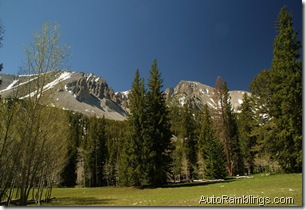 This National Park is situated in central Nevada close to the Utah border and I must admit, compared to the surrounding region, Great Basin NP is a true oasis in the desert. Itís one of few National parks offering a diverse environmental region that includes subterranean caves, a high altitude mountain
This National Park is situated in central Nevada close to the Utah border and I must admit, compared to the surrounding region, Great Basin NP is a true oasis in the desert. Itís one of few National parks offering a diverse environmental region that includes subterranean caves, a high altitude mountain
range, and a desert zone, all of which can be seen within 30 minutes of driving past the entrance gate into the park. The location of Great Basin National Park itself has the advantage of being a great hopping point for travelers who need a spot to stay when moving from many of the other nearby National Parks such as Yosemite, Zion, Arches and even Teton NP in Wyoming. All are within an eight to ten hour drive or less from this interesting stop in the desert. Even though the park does reside in a desert type region, I was very impressed with the high altitude zone Great Basin had to offer.
Aspen, fir, and variety of pines typical surround most of the campground areas and a large variety of flora blooms in the spring and early summertime including cactus which occupy the lower high desert regions.
A desert critter trap.
Check out this sand trap. Although I never saw anything caught, I doubt Iíd stick my finger in there. Iím actually not sure what species made this, maybe an Antlion. If it was, it was one big bug. The pit was a good four foot in diameter.
On the other side of the road the landscape turned from desert to meadow with a small stream and variety of flora scattered throughout the area as seen in the pictures below.
Diversity is awesome and walking 20 feet to see such a different landscape was an experience.
Autumn is also a unique time to visit the park because the colors are so vivid and abundant.
No matter what time of year, this place is one nice spot to visit.
Getting there:
The Park is located close to where US-50/NV-6 crosses from Nevada into Utah. The primary visitor center is located in Baker on route 487 but a similar center is located at the cave entrance inside the park.
Although there are a few ways to enter the parks boundaries, only one route (designated 488) enters the main portion of the park where the Lehman cave entrance and the main campgrounds are located. Besides the paved road into the park, there are a few smaller vehicle routes that run in and out of the park and some of these require a high clearance vehicle to travel on. Click on this link for directions.
Weather:
As you can expect, driving from a desert region into a high altitude alpine setting suggests that the climate can change dramatically.
On my first visit to Great Basin, I used this park as a stopping point between my home and Yellowstone NP. Mother Nature showed me just how diverse the weather can be here. As I entered the park boundaries, I found a storm had hit the lower region with heavy rain and tolerable temperatures. Things at this national park can change fast. A drive to the upper altitudes showed how the forest could be turned into a winter wonderland in a quick mode. A couple weeks later on my way back home, I found mild temps and the park delivered more spring like conditions. All the winter weather had been swept away.
Generally, the summer temperatures in the high desert hover in the 80ís and can reach much warmer temps at the lower altitudes, but because the park has campgrounds well over 8,000 feet, cooler temperatures could be sought out if desired.
The Park has seen temps as cool as -10 degrees and itís not uncommon for the rangers to close the upper campground that resides at about 10,000 feet during spring and fall when storms hit the park. When looking at the surrounding desert region, it seems like Great Basinís towering mountain range creates its own adverse weather causing a larger amount of rain and/or snow to fall within the park boundary.
Even in autumn, small streams flow through most of the campgrounds and although they donít form large rivers, it seems strange to see these small streams in the middle of such a dry region so late in the year.
Springtime offers a more fresh green appearance.
At times the streams may overflow around around some of the camp sites.
Another freak weather phenomenon is the possibility of high wind gusts. These can occur at different times of the year especially during stormy weather. For the most part the wind doesnít pose a problem, but leaving a camp exposed can be a mistake. At times heavy gusts can be a surprise to those who donít prepare for what high winds can do. On my last trip to GBNP my camp was molested by 80MPH winds while I was out on a 4×4 run.
After returning to camp and picking up the pieces of my destroyed screen tent, a 50 foot tree crashed to the ground only 20 feet from my van. Itís not common, but it happens. That night the winds were so great that I didnít even think of putting the top up on my van.
Supplies and amenities:
Except for the local residency of Baker Nevada which is only a few miles from the park, GBNP is basically out in the middle of nowhere. Baker has an unmanned fuel station plus a small store (as of 2010), but donít plan to stock up for the long haul. There is a state line quick stop type store on highway 50 that has fuel as well. Ely Nevada is probably the largest community close to the park followed by Milford or Delta Utah coming in as the next closest. All have reasonably priced fuel but Ely seems to have more of a true large town atmosphere with local restaurants and the typical fast food stops. Delta does have a McDonalds but the town is fairly small. I really prefer to visit the local home brew type dinners and dives, but most of the time Iím in such a rush that I quickly roll right through the cities missing those spots to sit down and have a good meal.
Camping and Recreation:
Although I prefer to boon dock in remote locations, Great Basin NP has usually been able to give me a fair amount of privacy while camping.
Iíve always been able to find an isolated campsite from the other visitors, but Iíve never braved crossing the desert during the peak of summer when the heat is melting the rubber off my tires and vacationers are coming in by the bunches. So please donít blame the author if you find it packed. It might be a good idea to call ahead before a visit.
Even though the Park receives a decent amount of traffic at times, being located in such a remote location has a huge advantage, and you usually should be able to find an empty site. There are six basic areas where the campgrounds are located four of which can hold large RVís.
-
Baker @ 7,530 feet. (Includes Gray Cliff picnicking area and group camping)
-
Lower Lehman @ 7,300 feet.
-
Upper Lehman @ 7,752 feet.
-
Wheeler Peak @ 9,886 feet.
-
The walk in camps located at the southern end of the park. Shoshone camp along the Snake River area has 6 primitive camps shown on the map.
-
A couple primitive camps located at the northern section of the park along Strawberry Creek. 4×4 suggested.
The park has vaulted type heads and most campsites have a table, fire ring, plus many have a free standing BBQ.
Water is available during the warmer times of the year but make sure you bring water. It seems that every time Iíve been there in spring or fall the spigots have been dry.
As with most National Parks, showers are not available and the park offers no lodging inside its boundaries. Showers are available at Baker but Iíve never used them. Information on them can be found at the parks web site.
Although the Park is somewhat small in size, it has a lot to offer for those visiting. By far the Leman cave tours are what makes the park unique. Link to Lehman cave images Itís the big stone in the jewelry box. For more information visit the Parks Web Site
Driving to Wheeler Peak:
Besides the cave tour, a drive to Wheeler Peak makes for a nice day. Leaving from the main entrance road that leads to the visitor center, the spur road to Wheeler Peak takes you past the upper and lower Lehman campgrounds.
The upper sections of the park is similar to the Sierraís and is a nice getaway from the more common Pinyon Pines that occupy Nevadaís lower forested regions. As it winds its way toward the top, the road offers views of the high desert zones that surround the park.
The drive is about 8 miles long and is fairly steep with some grades about 8%.
As the road rises in altitude, the scenery becomes more alpine like as seen in some of the images pictured in the first part of the article. Even some of the flowers are more like what are found in places like the upper Sierraís.
Part way up is a vista point that was recently built that not only offers nice views of the lower regions, but it also has a spotting scope on site open to the public which gives you a close up look of the basin and surrounding mountains. A plaque of Stephen Mather, the first director of the national park service welcomes you to the vista point.
What a nice scope and unlike those coin operated units it was free to use.
The upper campground and surrounding area is truly beautiful in my opinion and my number one choice for camping at.
Here youíll also find the trailhead to Wheeler Peak for those who wish to make the trek.
Whether or not you attempt to ascend the mountain, come to camp, or just go up for the drive, itís well worth the time and effort to visit the upper region of Great Basin NP.
The Gray Cliffs Trail:
One of the off road trails close to the main visitor center inside the park is the Gray Cliffs trail (also called Baker Creek Road). Itís located off the road into the Baker Camping area and is car friendly for the most part. There are no signs marking the route, but a good map will show the trail. The path starts off about 1.5 mi from the park entrance road. Although the run is only a class II trail and fairly short, it offers a chance to get away from asphalt and enjoy the backcountry. The trail can be taken in either direction but I preferred starting at the upper end. The path does take you out of the park but soon crosses back in. Along the route there are other trails that spur off in different directions, some of which are more difficult to travel on. The Gray Cliffs trail follows a contour line with scenic views above and below the drive. As with any off road route, check the conditions of the trail before attempting to run it and avoid it in wet weather if your vehicle is not rated for backcountry travel. The path ends at the picnicking area at Gray Cliffs. For those who wish to mountain bike the trail, itís an easy 5.3 mi ride. Continuing back on the main road FS-590 takes you to the start of the trail then continues back to the main road into the park.
An autumn drive along the Gray Cliffs Trail:
I really enjoyed this little run even though the trail is not a technical run.
I suppose rains could cause some trenching from runoff but most of the drive was class one. Some spots supply an overlook of the lower region. Not far down the trail it crosses out of the Park.
Unlike the upper zones of the park, this area is more high desert like with Pinyon Pines thick in some spots.
Here is where a map helps. There are several roads that lead into the lower desert region. Most of these are more difficult to travel on and are narrow for large vehicles.
The main trail is another story and gives wide berth for those traveling over it.
I was pleased to see some very vivid fall colors when dropping down to the creek area.
The mountain ranges that surround the park are highly scenic and vary widely in altitude.
The weather was breezy but it never rained. The upper zone were getting snowed upon though.
Seeing this was an indication the park staff might close the road to Wheeler Peak. Something to consider if you were camped up there.
Continuing on the trail I found the fall colors vivid even though it was overcast.
Soon youíll re-enter the National Park and as the trail leaves the stream, it climbs back into the Pinion Pine.
The trail ends up in the Grey Cliffs picnic area.
The cliffs are apparent and vertically standout.
Even the picnic grounds loop road offered fantastic fall colors.
This is a great little get-away from the rest of the park. Take the drive and enjoy it.
Astronomy:
This Park has some of the best skies in the country. Itís amazing what even a small 4??? scope will show during dark skies at this park. And donít discount what a good set of binoculars can do. At a minimum, the Milky Way is awesome. Park personnel put on public viewings when weather and skies permit.
Biking:
Unfortunately, the park has not created and off road biking within the park boundaries but as mentioned, a ride on the Gray Cliffs trail can be enjoyable. There are other trails outside the park to explore.
Fishing:
The park has water flowing practically year round and because it has lakes within its boundaries, fishing is available and offers a chance to catch a unique breed of trout not common to other areas.
Backpacking/hiking:
There are plenty of trails to explore within the park. Wheeler Peak is the second highest mountain in Nevada at 13,063í. Check out the hiking guide and map. This park might be a standalone destination for those who wish to do some interesting packing.
Some additional pictures inside Great Basin NP:
Summary:
There is definitely beauty in this park. Great Basin offers a variety of eco systems wrapped up into one small package. Centrally located to other National Parks, Great Basin NP is a welcome stop along the way and beats staying in any hotel. The park has nice camping spots and most are fairly private compared to what other National Parks have to offer. The only drawback is a lack of boon docking spots but that is to be expected. On the other hand, not too many National Parks offer a vast subterranean underworld to explore so if youíre looking for something different take a look at Great Basin. Itís well worth a visit on its own.
See ya on the trail.















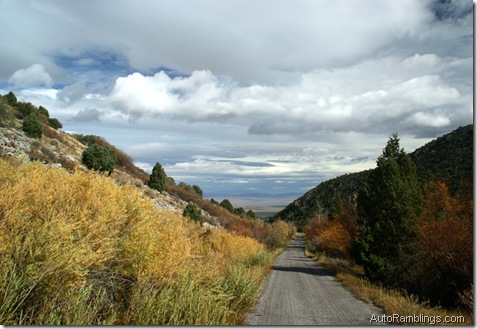
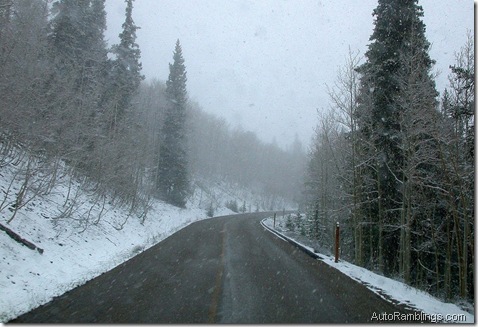

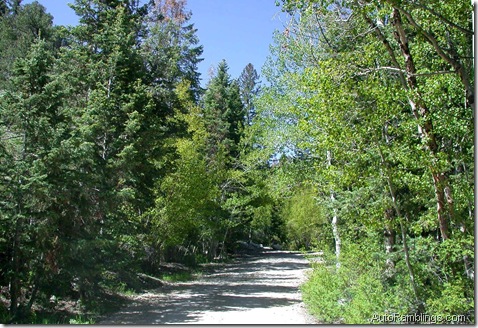

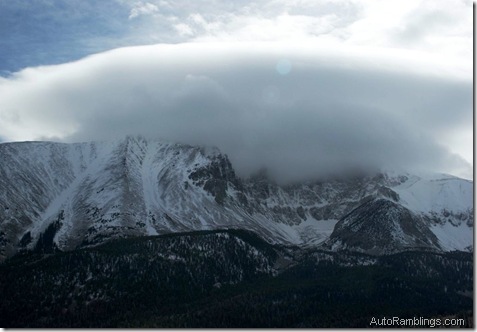

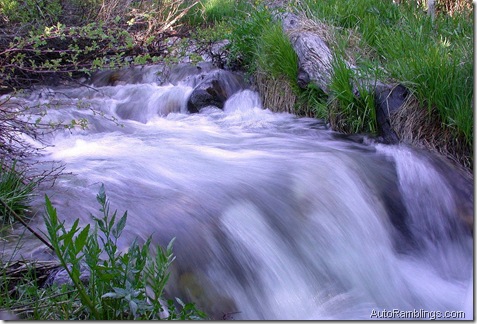
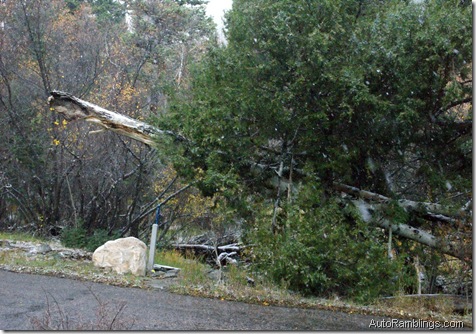

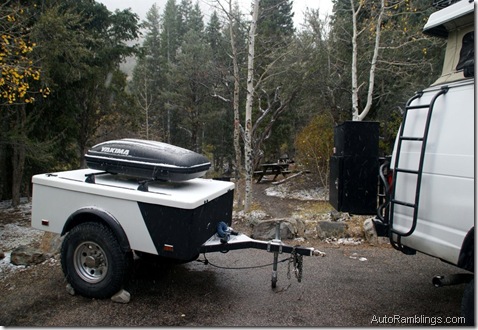
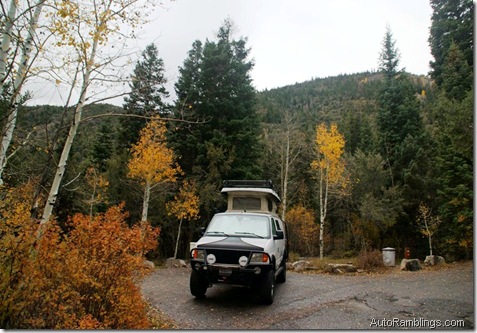

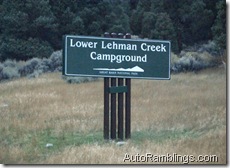

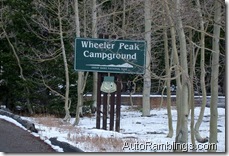



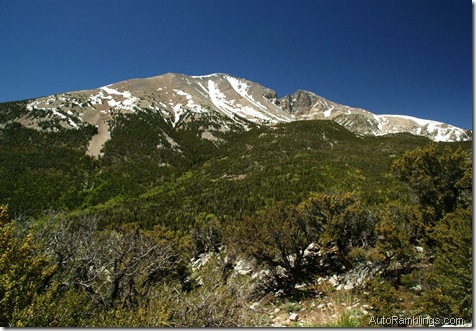


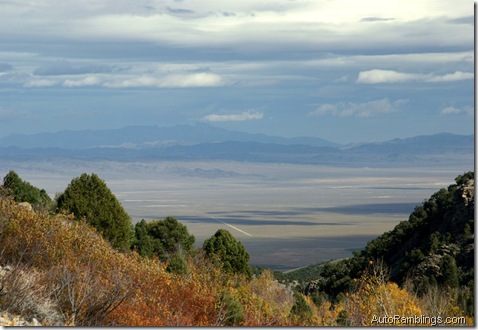










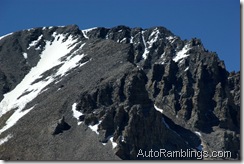


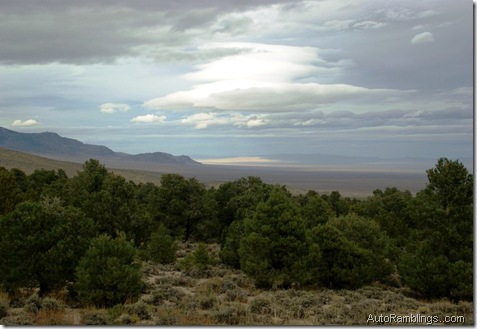


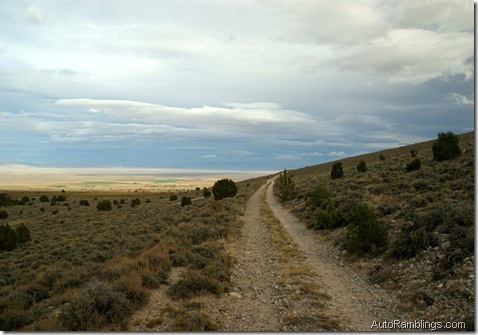
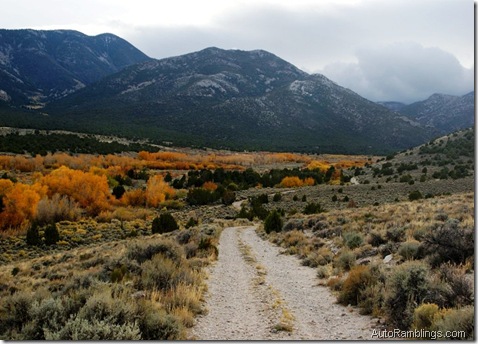









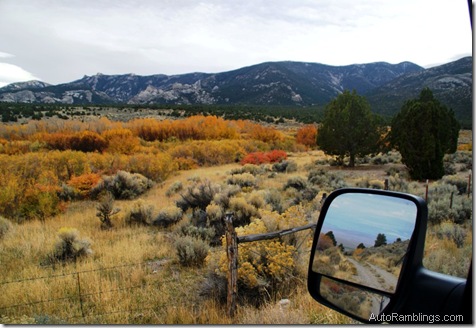




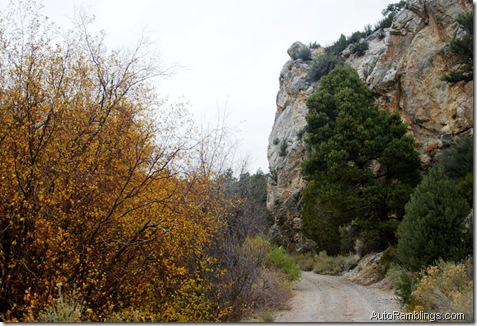


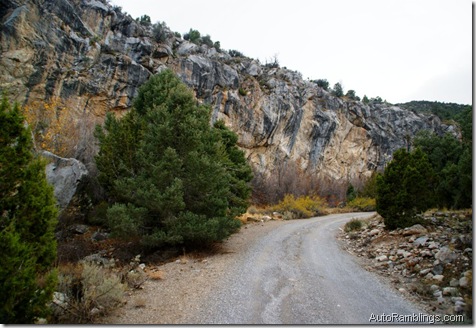


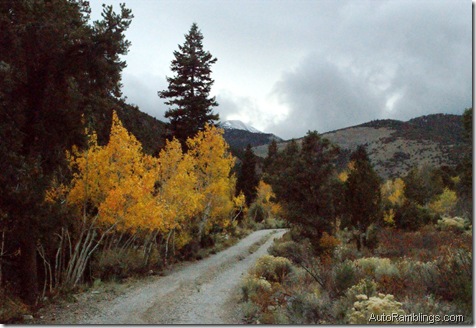


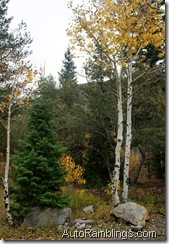



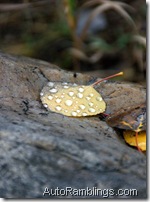





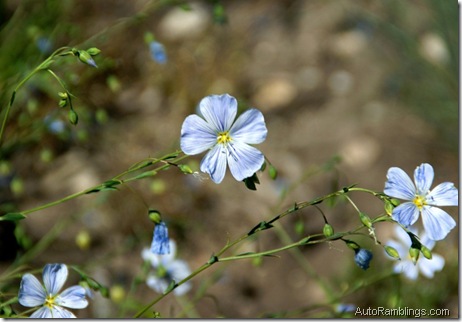







3 Responses
nice photos and and good info. I have been wanting to go to GBNP this just makes me want to go more. Thanks for the first hand knowledge.
Nice pics. I appreciate the “in depth” look at the park. I have scoured the web and this is the only website I’ve found yet that gives something other than a generic description. I plan on visiting this park the last week of June, 2014. Finding an empty campsite is my only real concern. We plan on staying 3 nights there(maybe 2). I’m not sure if I want to camp at Wheeler or Upper Lehman.
This will make my 39th national park. I like the ones nobody has heard of(well, I find all of them to be super). For example, I’ve backpack Quadalupe on 2 visits.
I somewhat wonder if I’m making a mistake by not going during Sept(fall foliage). I am bringing my wife along on this trip and she isn’t to keen on camping(especially with no showers). Was thinking Sept might be to cold. We are flying into Salt Lake or Vegas with Great Basin being the only thing we are doing. Again thanks for your posting
The place is really a nice park and although it can get crowded, most of the off season offers camps away from others. Hope you enjoyed your trip.